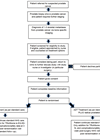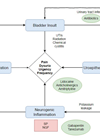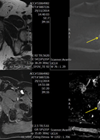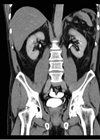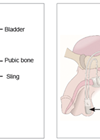Features archive for 2017
Testing radical prostatectomy in men with prostate cancer and oligometastases to the bone: a randomised controlled feasibility study
Prostate cancer is the commonest cancer and the second most frequent cause of cancer death in Western men [1]. The recent STAMPEDE data suggests a median survival of just 42.1 months in the control arm of metastatic men [2]. Current...
Intravesical glycosaminoglycan analogue instillations for recurrent cystitis
Introduction The symptoms of recurrent cystitis can be triggered by inflammatory or infective causes. Bladder pain syndrome (BPS) and bacterial recurrent lower urinary tract infection can both present with symptoms of recurrent cystitis and cause significant morbidity in affected individuals....
Nocturnal enuresis in children
Introduction Nocturnal enuresis is the complaint of bedwetting. The 2010 National Institute for Health & Care Excellence (NICE) guidelines define bedwetting as the “involuntary wetting during sleep without any inherent suggestion of frequency of bedwetting or pathophysiology” [1]. Bedwetting is...
Post-orgasmic illness syndrome
Introduction Disorders of ejaculation are a rare and poorly understood subsection of male sexual dysfunction. A paucity of evidence has hindered advances in definitions, epidemiology, pathophysiology and management. The licensing of a specific medication for premature ejaculation signalled the research...
The PROMIS trial – time for multi-parametric MRI before a first prostate biopsy
Whilst the relatively random process of 12 core transrectal ultrasound guided (TRUS) prostate biopsy remains by far the most widely employed approach to prostate cancer diagnosis in the UK, its flaws as a standalone diagnostic strategy are increasingly apparent. TRUS-biopsy...
ICS updates in continence care: a personal perspective on the role of basic science in urology
At a urology research meeting in Sheffield a few years ago, a former post doctorate researcher in urology, Mathieu Boudes, said: “Stop calling it basic research, there is nothing basic about it. It is fundamental research to everything urologists do.”...
Consent: your obligations in the modern, post-Montgomery era
There has been so much recent discussion and so much emphasis placed on the fundamental right that we all have to determine what is or is not done to us, the right to self-determination, that it would be either a...
Surgical treatment of LUTS secondary to BPH
For the vast majority of patients an initial trial of medical therapy for the management of lower urinary tract symptoms (LUTS) secondary to benign prostatic hyperplasia (BPH) is indicated [1]. In a substantial minority of cases however, a surgical intervention...
Radiology quiz
We are delighted to introduce something new for the Uroradiology Focus – our very own Jane Belfield has put together a urology imaging quiz with 10 cases designed to grab your interest and test your knowledge. Good luck and let...
What’s new in post prostatectomy incontinence?
With an ageing population, the number of men being diagnosed with prostate cancer each year is steadily rising. With more specific investigations, such as multiparametric magnetic resonance imaging (MpMRI) and transperineal biopsies, the number of cases diagnosed at an earlier...
Small renal masses – diagnosis and management
Renal cancer is the eighth most common cancer in the UK and accounts for about 3% of all new cancer diagnoses [1]. The incidence rates are steadily rising, with the highest rates being in older men and women. This rise...
An overview of daytime wetting in children
It is estimated that daytime wetting affects one in seventy-five children over the age of five years [1]. Daytime wetting is commoner in younger children (1 in 7 aged 4.5 years, 1 in 20 aged 9.5 years) [1]. Many younger...

